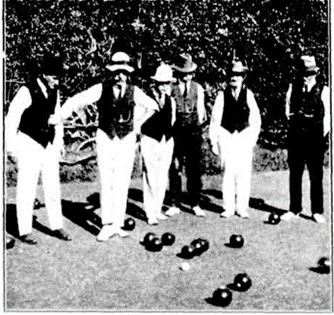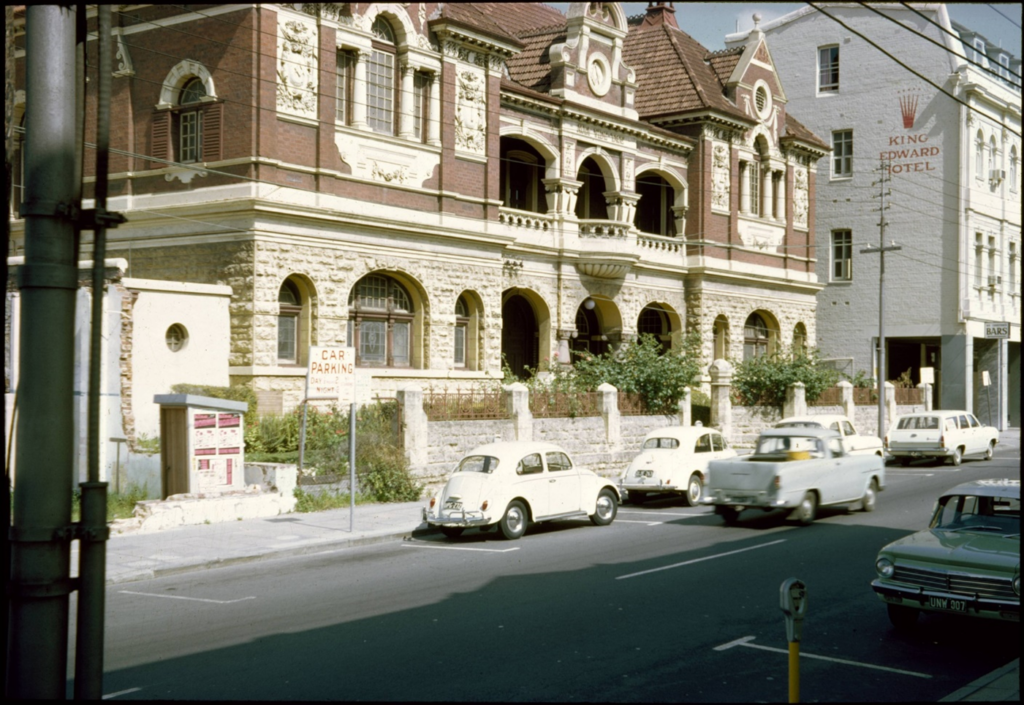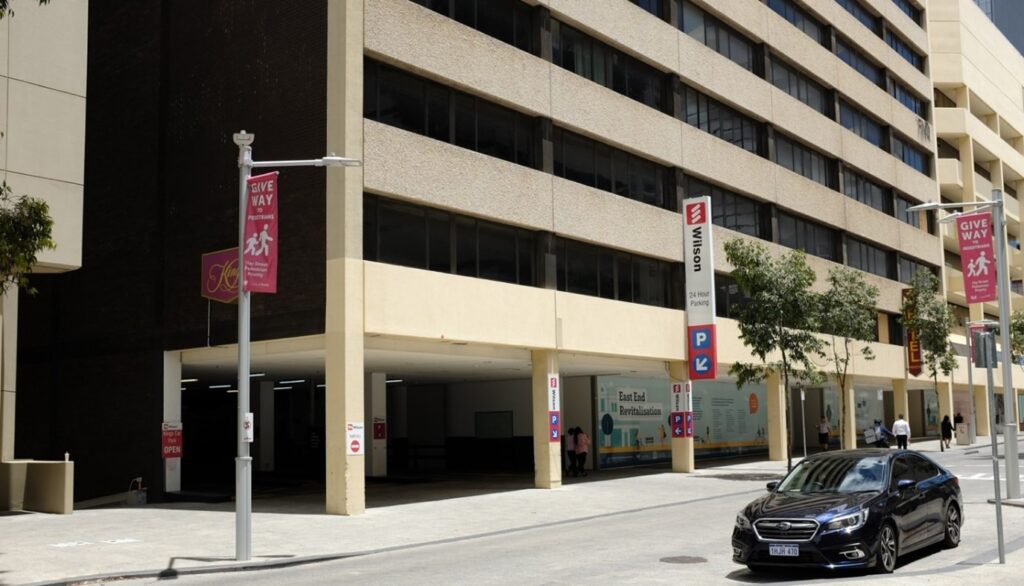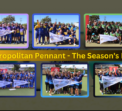10 Bowls Clubs that no longer exist? – Freemasons
Coming in at number two on our list of ten clubs that no longer exist is a club that no player alive today would have ever played at but it remains one of the most unique to have ever existed and it was located right in the middle of Perth on Hay Street; the Freemason’s Club.
The Freemasons’ Club was officially admitted as the fourth Bowling Club to join the West Australian Bowling Association doing so in 1901. Because the club closed in the early 1950’s much of the history has been lost to time or is extremely hard to ascertain with 100% certainty but based on evidence available we have done our best to paint a picture of a club which is significant within the annals of Bowling in Western Australia.
Freemasonry is one of the world’s oldest and largest fraternal organizations, having being practiced in countries all around the world for hundreds of years. Built on Integrity, Friendship, Respect and Charity it’s an organization comprised of men of character and substance with high ideals and worthwhile values who make a difference in the community. It is an organization which is not normally connected with lawn bowls although undoubtedly, they had many members who were bowlers at this time and most likely still do today.
The Freemason’s green which was situated behind the resplendent Masonic Lodge was just four rinks surrounded by a natural hedge. Whilst Perth Bowling Club is widely acknowledged as the first club to exist in Western Australia there are references that the Freemason’s green may have been the first to have seen bowls rolled on it in Western Australia. The club was situated on Hay Street on the south side between Pier and Irwin Street, much of which was privately owned land within the original colony of Perth. Its speculation but the Freemason’s green may have been inherited when the block was originally purchased in 1896, with the green having been built privately several years earlier.

The Masonic Lodge itself which would have doubled as the bowlers’ club house was a very ornamental building. The building, which occupied a frontage of 40ft. with a depth of 35ft., treated in the Queen Anne style, and was built in brick with cement and terracotta dressings and roofed with Marseilles tiles. The principal entrance is centrally situated and accentuated by a pediment, giving it the necessary emphasis. It has been planned symmetrically on a central axis, having wings on either side at right angles. The building is of two stories with a basement under rear parties.
Entering on the ground floor from a piazza 8ft, 6in. wide through a vestibule, the main hall is reached leading right and left (with the strangers’ room and writing room each 16ft. x 12ft. arranged on either side) and giving access to the members’ room, which is 30ft. x 25ft., billiard-room, 40ft. x 25ft., card room 10ft. 6in. x 16ft. 6in., stewards’ bar 25ft. x 15ft., telephone-room, lavatories, etc, on the right the District Grand Secretary’s office 17ft. x 16ft., secretary’s office 24ft. 6in x 12ft, reading-room 24ft. 6in. x 17ft. 6in., store and spacious back verandah on the left. Down a broad flight of stairs the basement is reached, containing dining-room 24ft. x 30ft., kitchen 25ft. x 18ft., cellar 25ft. x 17ft., store, larder, servery, scullery, lavatories, etc., all conveniently arranged.
Reached from a corridor 7ft. wide on the first floor is the large lodge-room, 60ft. x 30ft. and 22ft. high, with ante-rooms, cloak-rooms, etc., attached, also a small lodge-room, 30ft. x 18ft., with ante-room, cloak-room, etc, attached, the banqueting-room, 58ft. x 30ft., a large cloak-room 23ft. x 17ft., servery, lavatories, and conveniences.
On the ground-floor the members’ room, billiard-room, card-room, and strangers’ room can be served direct from the bar. The lodge rooms and banqueting-room having been elaborately treated internally with plaster detail and cared ceilings, parceled out into different designs and executed in fibrous plaster. An organ chamber is arranged in the centre of the south wall of the large lodge-room. The balcony over the piazza is accessible from the large cloak room and the banqueting-room. The large cloak-room adjoins the banqueting-room, and is divided by a patent roller shutter the full width of the room, so that if occasion requires it can at any time be thrown in as additional accommodation to the banqueting-room. The architect for the building was done by a Mr. J. Talbot Hobbs who was a noted Freemason of the time and constructed in 1897.
Various Masonic symbols decorate the front façade including the five-pointed star and a square and compass united. The Latin inscription above the entrance was: AUDI VIDE TACE (Hear, See, Be Silent).
Given at the time many other bowling clubs were one room clubhouses, to play at the Freemason’s Club was a treat for many bowlers.
Originally the green was deemed unsuitable for play but the Mason’s quickly went about rectifying that albeit they were forced to play Pennant away in their entire first season. With the green better prepared and ditches in place more Masons’ took up the game as they quickly became a force on the green.

At a time when the sport was considered very genteel the Masons’ gained a reputation as bringing character to the sport and were known for good fellowship and unbounded hospitality.
During their hey-day period, 1904-1909, the Masons’ played 82 pennant matches and won 71, losing just 11. They went on to win a total of seven A Pennants between 1905 to 1914 and rarely were defeated at their home sward during this time. The Freemason’s claimed twelve state titles with three Singles, five Pairs and four Fours. The name Corpaccioli responsible for six of these and eight titles altogether having also claimed a Singles with Perth and a Pairs with Fremantle. He was considered the premier player of his time, almost invincible and struck fear into the minds of his opponents even before they stepped onto the green.

Off the green the Freemason’s were a strong force within the Perth community with many wealthy members contributing generously to developments around Perth and of course also via the Freemason’s charity work. They annually held a Children’s event which regularly saw 200 youngsters attend the club, many would look out from the balcony with ice creams as the bowlers were practicing. Several members of the club were also instrumental in helping set up other clubs particularly in country areas, most notable was Wagin whose first Secretary was a previous Freemason’s Club member.
Stifled by the fact the club had no opportunity to expand on its four rink green and with many champions having left or faded from the limelight, the club was relegated to the minor divisions from the 1920’s onwards, but continued to display their well-known fellowship and hospitality along the way. By the early 1950’s Perth was transforming into the bustling metropolis it has become today and the small green barely received sufficient sunlight to produce a playable surface.
In 1953 the bowling section of the Freemason’s disbanded altogether and the Freemason’s had sold the building back to the State Government around the same time and moved on. Sadly, the building was demolished in 1971. During its history it had had a number of occupants: the Mines Department; The Agricultural Bank (Rural & Industries Bank); and the Public Trust Office.


In 2012 Bowls WA was fortunate to receive a call from Victoria Park Masonic Hall Manager Allan Gayle which resulted in all seven Pennant shields won by the Freemasons Bowling Club from 1904 to 1914 being donated to Bowls WA. The Shields were destined for a mini-skip bin before they were salvaged.
With no reference in Bowls WA archives it is clear the Freemasons Club had them specially made to commemorate the Pennant wins and the seven shields are in remarkably excellent condition considering they are all over a hundred years old.

Intricately designed each shield has its own special characteristics, most with metal trim and some form of bowl inserted into the shield which has been hand crafted from various types of wood including one very heavy jarrah shield.
Two of these shields were later used as centerpieces for the current Premier League shields which display every winner of the Pennant Competitions since inception, which is 1897 for Men and 1936 for Women.

The other five shields will one day be used as part of a WA Bowls historical collection ensuring the Freemason’s legacy will live on for a long time yet.
Missed a previous article in this series?



